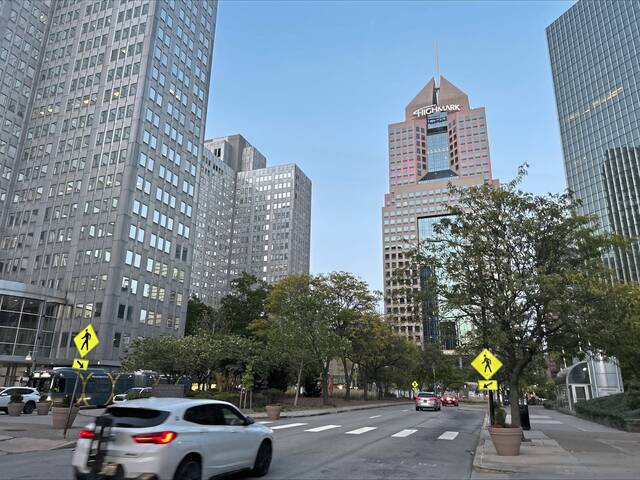On the rebound: Downtown Pittsburgh living surges after pandemic
Downtown Pittsburgh’s residential occupancy rate is nearing an all-time high as officials push for more housing in the Golden Triangle, according to the Pittsburgh Downtown Partnership.
The nonprofit community development organization in a quarterly report shared Tuesday said 93.8% of residential units are currently filled.
The Golden Triangle saw a 94.8% residential occupancy rate high in 2019 before dropping to 81.6% during the covid-19 pandemic.
“Downtown living has rebounded and is, in many ways, outperforming expectations,” said Cate Irvin, senior director of economic development at the partnership.
Aaron Sukenik, the partnership’s vice president of district development, reiterated the group’s goal to double the Central Business District’s residential population to 15,000 from about 7,300 within the next decade.
About 2,500 people lived in the area in 2000, according to the partnership.
The push for more people living Downtown comes amid an ongoing effort to convert to housing office spaces that have been left empty since the pandemic drove a widespread shift to remote work.
Several residential conversion projects are included in a $600 million Downtown revitalization plan championed by Gov. Josh Shapiro.
That plan also includes upgrades to Market Square and Point State Park, plus the construction of a new outdoor civic space dubbed Arts Landing.
About 35% of Downtown office space — as much as 8 million square feet — could be converted to housing or other non-office uses in the coming years, Sukenik said.
Conversion challenges
While much of Tuesday’s quarterly update focused on residential growth, the Pittsburgh Downtown Partnership wants to boost the number of retailers in the area by at least 10%.
The ideal mix for Downtown’s commercial real estate portfolio, according to the organization, would be about 45% office space, 15% retailers or entertainment and 40% residential. Currently, the area has hit the mark for retailers and entertainment but lags behind the other measures with about 19% housing and 66% office space.
Residential conversion projects are in the pipeline, however, with nearly 1,100 new residential units either under construction, in the planning process or being pitched. That includes 225 apartments — plus over 100 luxury hotel rooms — now under construction in the Gulf Tower.
About 450 of those nearly 1,100 housing units are set to be affordable housing for low-income renters.
Sukenik acknowledged that converting office buildings — many of which are older — presents challenges.
“We can’t really say it’s all 100%, everything is a go,” he said, explaining developers are facing barriers like increasing construction costs and the need for complex financing from various public and private sources.
Projects converting historic buildings to housing have higher per-square-foot costs than new construction, he said.
“The math is hard,” he said. “Downtown’s housing market has demand momentum, but high costs are delaying the construction of new units.”
Faster permitting, incentives and gap financing assistance can help, he said.
‘Strong’ housing market
Downtown currently boasts higher residential occupancy than the nearby North Shore and Strip District neighborhoods, according to data presented by the partnership’s Irvin.
Average rents in the Golden Triangle are around $1.97 per square foot. But the newest housing units are going for about $2.63 per square foot, on par with average rents in the nearby Strip District, Irvin said.
“Downtown’s housing market is strong, it’s stable and it’s competitive with new conversions leading the way in both occupancy and rent growth,” Irvin said.
Condominium sales also are remaining fairly steady in recent years, Irvin said, reaching 47 so far this year, on track to outpace last year’s 52 condos sold.
Danise Bortolotti, a real estate agent with Piatt Sotheby’s International Realty, said Downtown presents some challenges for residential living.
“We need more everyday amenities — for example, things like a full-service grocery store,” she said.
Both Bortolotti and Pittsburgh Downtown Partnership President Jeremy Waldrup were bullish on the Golden Triangle.
“This is just the beginning,” Waldrup said. “We can’t take our foot off the gas.”
Julia Burdelski is a TribLive reporter covering Pittsburgh City Hall and other news in and around Pittsburgh. A La Roche University graduate, she joined the Trib in 2020. She can be reached at jburdelski@triblive.com.
Remove the ads from your TribLIVE reading experience but still support the journalists who create the content with TribLIVE Ad-Free.

